
In the latest edition of Functionally Fit, Brian adds the BOSU to increase the difficulty of the plank. This exercise is designed to improve scapular, hip and core stability, while also improving hip strength.
See 'Related Resources' below for past Functionally Fits and other exercises and training tips.
Execution:
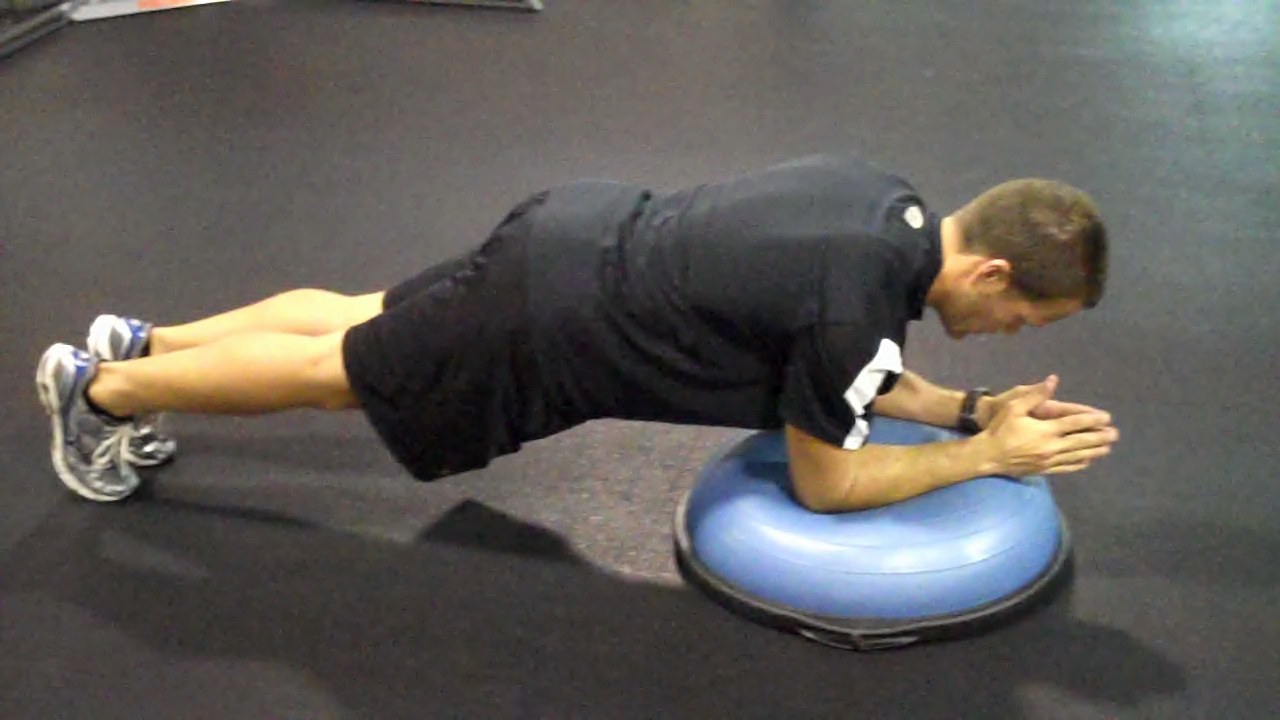 |
| Position the BOSU dome side up. Start in a plank position with the elbows on the BOSU and toes on the ground. Ideally, the feet should be close together. |
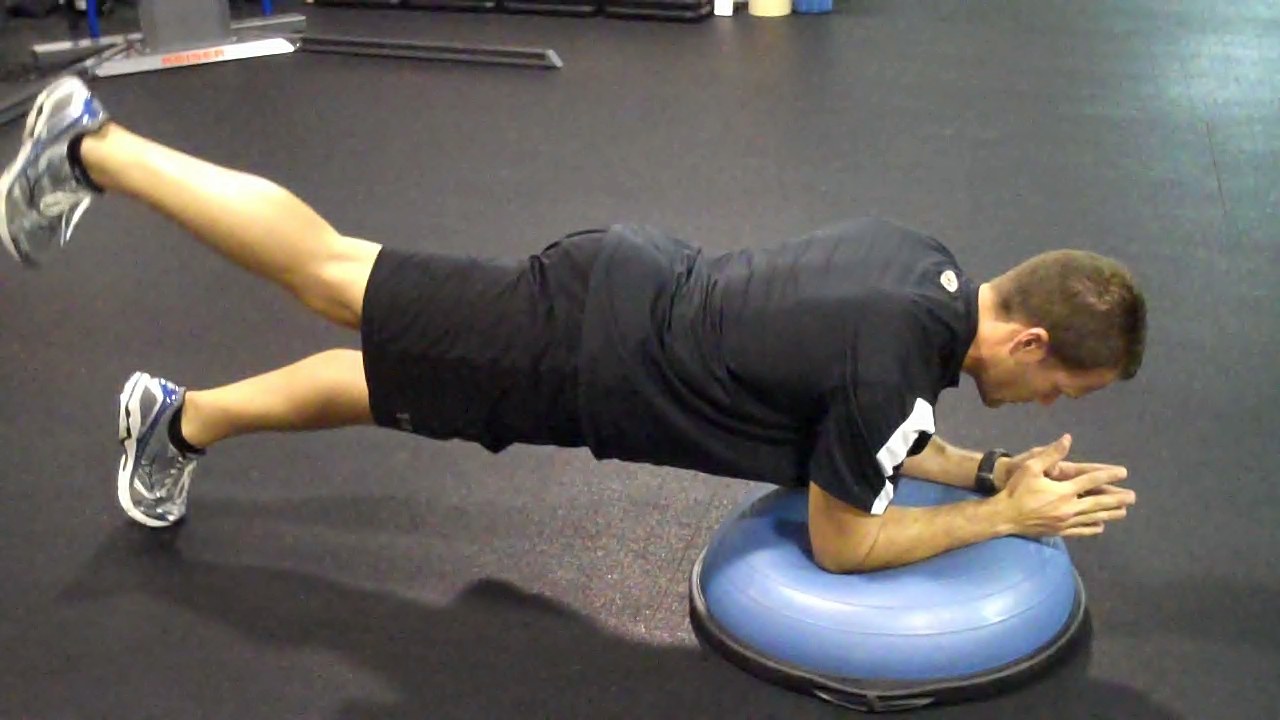 | 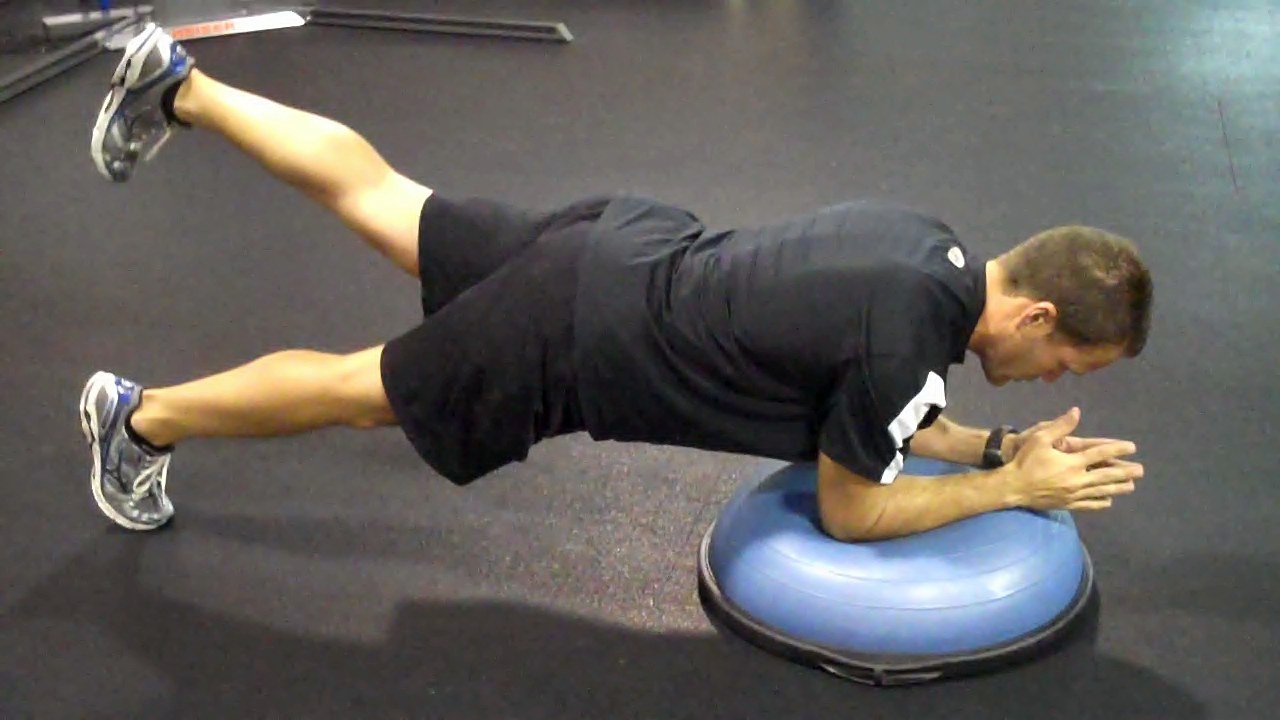 |
Slowly extend one hip keeping the knee straight and foot neutral or slightly dorsiflexed. Pause at the top and lower back down. Alternate legs and repeat for 10 repetitions.
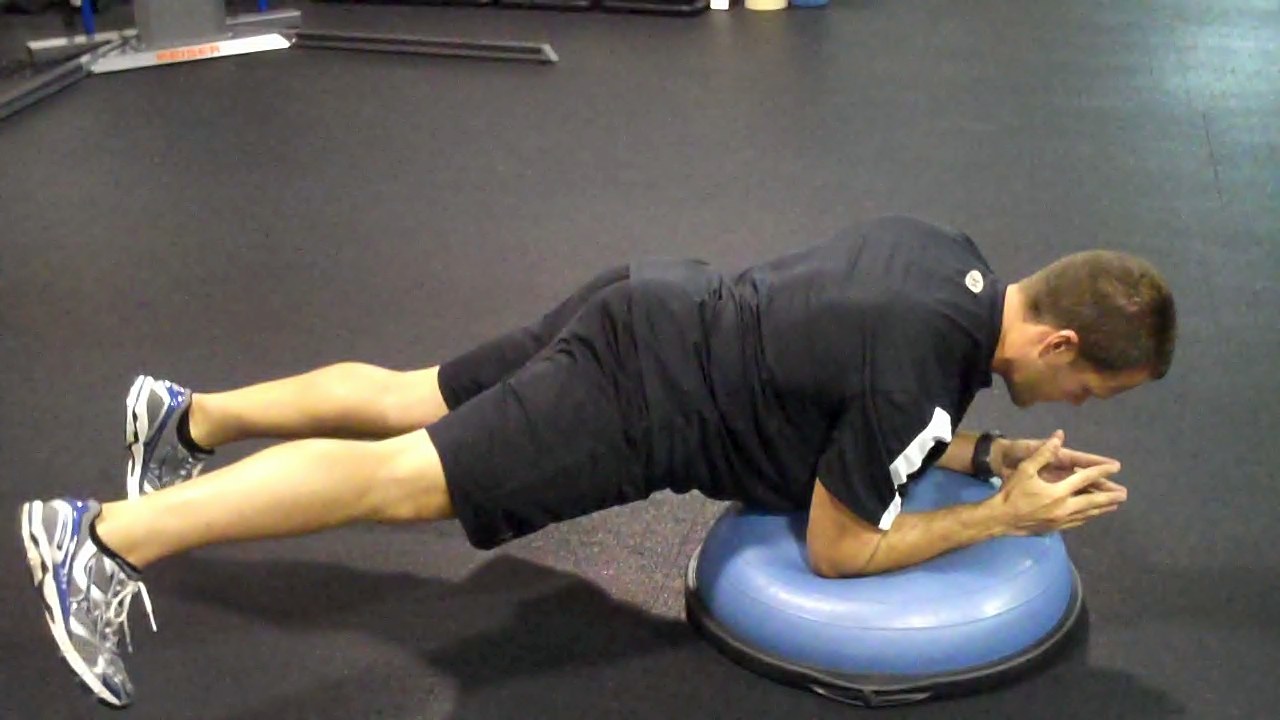 | 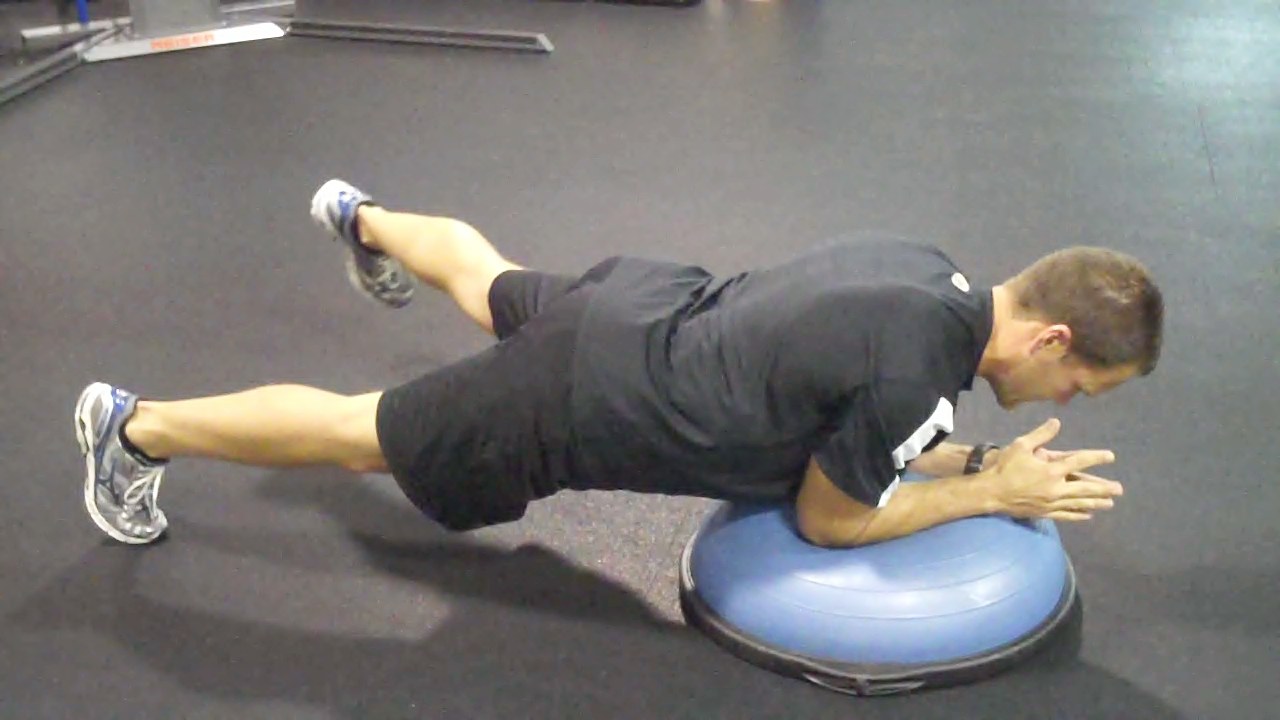 |
Next, maintain the plank position and abduct or move the leg away from the body. Pause and then return to the start position. Alternate legs and repeat for 10 repetitions. Do 2-3 sets of each movement.
Application:
This exercise is designed to improve scapular, hip and core stability, while also improving hip strength. The BOSU surface adds more difficulty via reduced stability during the plank. Superimposing unilateral hip movement calls for greater hip stability on the stationary side, while allowing for targeted strength work on the moving side.
Utilizing a deliberately slow cadence is best as it maximizes the stability challenge and does not necessitate a high load for effective work. To add additional resistance, consider an ankle band or thera-loop placed around both ankles.
This exercise is particularly useful for clientele dealing with weakness in the core and hips like so many of the female soccer players I train. Most female cutting and jumping athletes at risk for ACL tears and patella-femoral pain/overuse issues tend to be quad dominant and display reduced gluteus maximus and medius muscle firing. Additionally, based on functional screening, I see consistent weakness in the core.
Precautions:
Prior to attempting this exercise, be certain your client is able to master a stable plank on the BOSU for no less than 30-45 seconds as the hip work becomes secondary and less meaningful if the core gives way to fatigue early on.
Brian Schiff, PT, CSCS (www.brianschiff.com) is a licensed physical therapist, respected author and fitness professional. He became a Certified Strength and Conditioning Specialist (CSCS) in 1998. In 2000, he opened his own personal training and sport-specific conditioning facility, Fitness Edge, in Dublin, Ohio. Brian has presented at several professional conferences and seminars on injury prevention and sport-specific training.
















